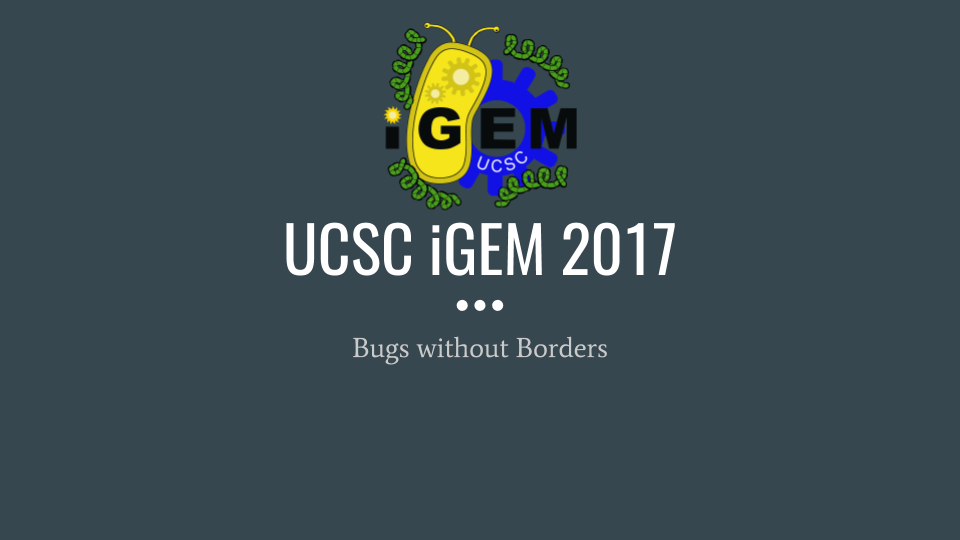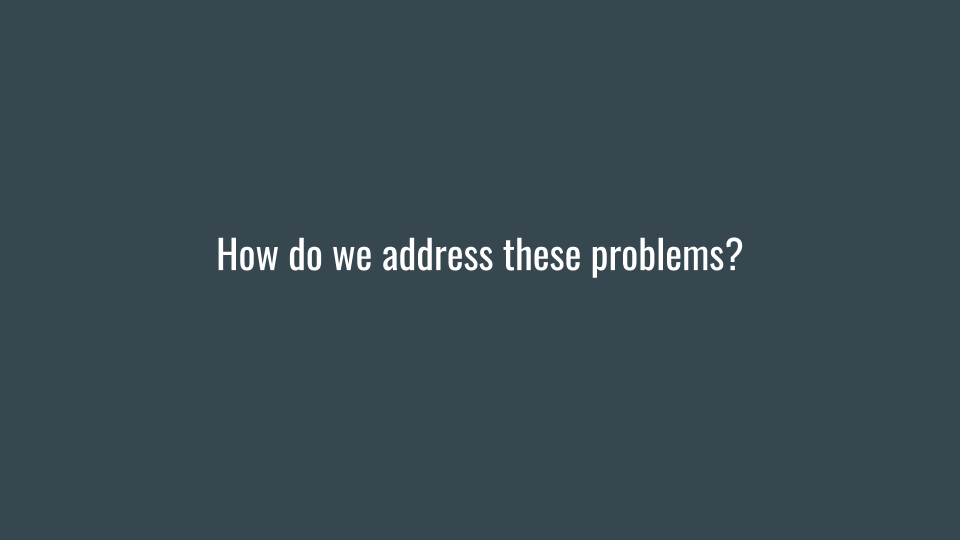
EDUCATION AND PUBLIC ENGAGEMENT
Outreach is a significant aspect of our project this year. The goal is to pursue a project that will provide a long-standing solution to a current problem. Before deciding on a project, we began our outreach efforts by contacting health practitioners around the world to ask what they saw as the most prevalent and important healthcare issues to address. Many of our contacts directed us towards vitamin deficiency, stating that the lack of accessibility to adequate sources of essential vitamins is a significant healthcare issue. They also directed us towards the lack of essential medicines available; some of the most common medications are painkillers and fever-reducers which are often used as supplementary medication for numerous ailments.
Community outreach is, and will always be, an integral component of bioengineering, and more specifically, genetic engineering. Without immersing ourselves in our community, we end up lacking insight into reality, and we run the risk of misunderstanding problems in society. Santa Cruz in particular has a relatively large homeless population for its size, though our concerns are largely founded in foreign affairs.
St. Francis Soup Kitchen in Santa Cruz, California
In an effort to better understand our local community’s relationship with inadequate nutrition and access to medicine, we volunteered at the St. Francis Soup kitchen in Santa Cruz to serve our community. We met with individuals who had been involved at the soup kitchen for many years and were able to gain insight on how both our local and national government have been addressing homelessness in the United States. Homelessness is a multi-faceted issue that also results in an isolated population with inadequate access to proper nutrition and health care. Volunteers voiced their approval at the potential deviation from “big pharma” that our project offers.


Here, we were able to interact with and ask certain individuals at the soup kitchen about how their dietary and medical needs are met. Often times they are only able to access the leftovers of their local community, whether it be food or healthcare. The soup kitchen is able to supply lunch five days a week based on the leftovers or newly-expired food from local businesses. Community members at the soup kitchen were excited to see a health-related project aimed towards a making a feasible localized medicine approach in communities struggling with precarious access to nutrition and medicine.
We met with and built personal relationships with members of our community who we would be impacting by developing a sustainable method of producing essential medicines and supplements. At the St. Francis Soup Kitchen, the relationships we made and the conversations we had would not have been possible without this project.
 Our team member, Brittney Wick, demonstrating to a student how a toy containing phosphors can be energized by normal sunlight.
Our team member, Brittney Wick, demonstrating to a student how a toy containing phosphors can be energized by normal sunlight.
Vietnamese-Catholic Summer Camp at The Lasalle Community Center in San Jose, California
To educate our own community of these issues, our team visited a summer camp to teach children between the ages of 7 and 14 about life sciences. We introduced the concept of genetic engineering through fun activities catered to each age group. In doing so, we hoped to raise awareness of the bioengineering field and inspire the next generation of scientists.
Engage Our Audience -- Grades 2-5
The younger age groups (grades 2 - 5) played a base-pair matching game in which each child wore a piece of construction paper cut like a puzzle piece. Each puzzle piece represented a base, and only the bases A and T could fit to each other while children wearing base C were able to match with the children who wore base G. The children were then introduced to the idea of DNA and its role in shaping our physical characteristics. Younger children were also asked to name animals in English and Vietnamese. This exercise was to help the children connect certain lessons to their first language.
 Team member Xander Pearce explaining how to play the base pairing game.
Team member Xander Pearce explaining how to play the base pairing game.
Engage Our Audience -- Grades 6-8
The older children were challenged to an egg drop activity. They were given an egg and several household items such as yarn, dixie cups, and straws, and challenged to make a container for a raw egg so that the egg would not break after being dropped from several feet from the ground. Before dropping the egg, the group members made a brief presentation about their device, describing their logic behind their design, and of course, announcing their team name. We discussed the reasons behind the results, asking, “what do you think led some eggs to break but not others?” This activity helped them problem solve while in groups.
 Team member Evan Pepper giving advice to the students about how to build a contraption to keep an egg safe when dropped.
Team member Evan Pepper giving advice to the students about how to build a contraption to keep an egg safe when dropped.
Following the egg drop activity, we used eggs to explain a simplified version of genetic engineering by injecting green dye into the yolk without breaking the egg. We asked whether they thought it would be feasible to modify a cell (the egg) without breaking it. We explained that just like in genetic engineering where a modification has to be made to the cell to make it easier to insert DNA, we had to soak the egg in vinegar to make it easier to inject the dye. This activity introduced the basics of genetic engineering.
 Team member Xander Pearce giving advice on how to problem solve.
Team member Xander Pearce giving advice on how to problem solve.
Besides the main activities, we also helped the children make oobleck and demonstrated an egg being sucked into a bottle with the help of a few matches. We aimed to show the children how exciting science can be if we allow ourselves to ask questions with the determination to discover as many possible answers as our question would allow, and to be open to new questions as they arise.
 Team member Khanh Tran teaching the older age group about cell biology shortly before the green dye injection activity.
Team member Khanh Tran teaching the older age group about cell biology shortly before the green dye injection activity.
Leland High School in San Jose, California
We also guest lectured at Leland High School in San Jose on synthetic biology and genetic engineering, and the ethical, cultural, political and various other implications associated with modern laboratory endeavours. With an audience of high school students, we hoped to spur a conversation that addressed both the consequences and rewards of genetic engineering, while instilling a greater sense of awareness and ethical reasoning in the students. We hoped to inspire these students to delve into the policies surrounding genetic engineering, as well as to question its applications and potential consequences in society.
 Team visiting Leland High School in San Jose, California to lecture about synthetic biology and its ethical implications. (from left to right: Khanh Tran, Marissa Taub, Daniel Schmelter, Evan Pepper, PI Dr. David Bernick, Xander Pearce, McKenna Hicks, Casidee McDonough, and Pratibha Jagannatha)
Team visiting Leland High School in San Jose, California to lecture about synthetic biology and its ethical implications. (from left to right: Khanh Tran, Marissa Taub, Daniel Schmelter, Evan Pepper, PI Dr. David Bernick, Xander Pearce, McKenna Hicks, Casidee McDonough, and Pratibha Jagannatha)
Each lecture was approximately an hour and a half. During that time, we focused on the process of identifying problems, raising awareness about those problems, finding solutions, and identifying areas of concerns associated with the proposed solutions. We dedicated a significant amount of time to focus on the Marshall Islands, and the people who were displaced by U.S. nuclear weapons testing. We wanted to focus on an issue that impacted inhabitants of the United States that was directly caused by faulty policies in the past. We aimed to demonstrate the importance of considering all facets of an issue before turning to a solution through synthetic biology. We helped students through the process that we ourselves did while deciding on our project. We wanted the students to first identify the health concerns that the Marshallese currently face, propose a possible solution that could be engineered using synthetic biology, and brainstorm ways to involve the community outside the technical science realm. Ideas brought forth were to raise awareness over a social media platform or lobby for changes in policy through the local governments.















While we were able to teach the students about our own experience, we were able to learn about the high-schoolers’ process of developing solutions to problems faced by isolated, underrepresented and disenfranchised people. While many students were in favor of genetic engineering, many were hesitant to support such a new and controversial method. We were able to hold an educated discussion about what makes genetic engineering so controversial and how we can utilize it to the best of our ability to benefit our fellow global citizens.
We invoked collaborative discussions among high school students, about topics that are out of our everyday realm of thinking and expertise. That is an important topic to discuss topics that are uncomfortable, out of area of expertise, and have to be brave enough to take the past into account for what it was, and to problem solve from that standpoint, to think critically and create effective solutions for the future.
University of California, Santa Cruz
In order to raise awareness on campus not only about iGEM and our project, but also about bioengineering and genetic engineering, we tabled at the annual OPERS fall festival and asked students what bioengineering meant to them. We were met with a variety of responses from the student body, and we were delighted to see how open-minded many students were. We discussed issues revolving GMO's, the pharmaceutical industry, genetic engineering and eugenics, bioethics, and of course, some of the many problems associated with malnutrition and vitamin deficiency. We emphasized the interdisciplinary nature of iGEM, as well as the crucial role everyone has in helping develop a potential solution to a real-world problem.


















